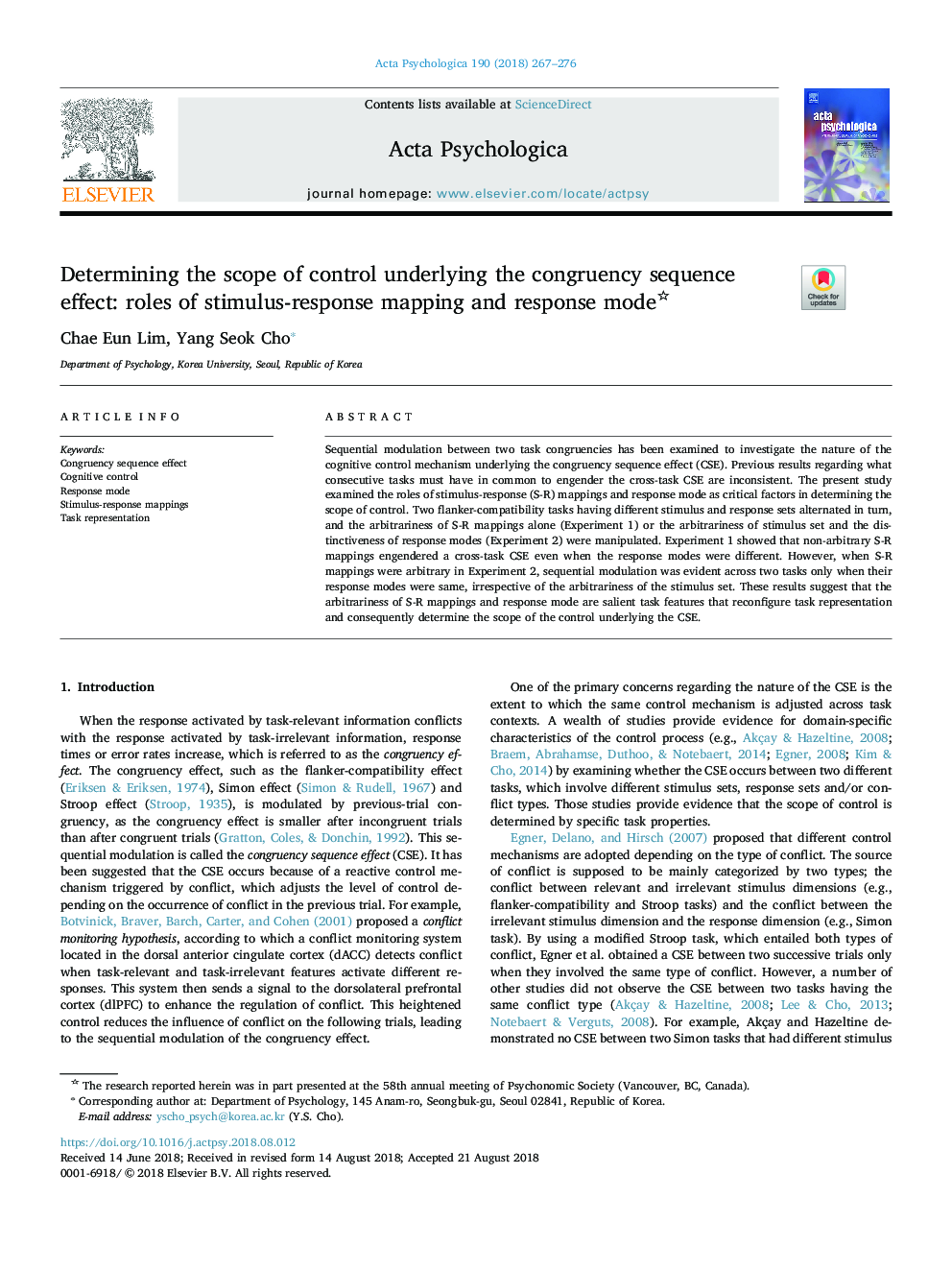| Article ID | Journal | Published Year | Pages | File Type |
|---|---|---|---|---|
| 11004514 | Acta Psychologica | 2018 | 10 Pages |
Abstract
Sequential modulation between two task congruencies has been examined to investigate the nature of the cognitive control mechanism underlying the congruency sequence effect (CSE). Previous results regarding what consecutive tasks must have in common to engender the cross-task CSE are inconsistent. The present study examined the roles of stimulus-response (S-R) mappings and response mode as critical factors in determining the scope of control. Two flanker-compatibility tasks having different stimulus and response sets alternated in turn, and the arbitrariness of S-R mappings alone (Experiment 1) or the arbitrariness of stimulus set and the distinctiveness of response modes (Experiment 2) were manipulated. Experiment 1 showed that non-arbitrary S-R mappings engendered a cross-task CSE even when the response modes were different. However, when S-R mappings were arbitrary in Experiment 2, sequential modulation was evident across two tasks only when their response modes were same, irrespective of the arbitrariness of the stimulus set. These results suggest that the arbitrariness of S-R mappings and response mode are salient task features that reconfigure task representation and consequently determine the scope of the control underlying the CSE.
Related Topics
Life Sciences
Neuroscience
Cognitive Neuroscience
Authors
Chae Eun Lim, Yang Seok Cho,
